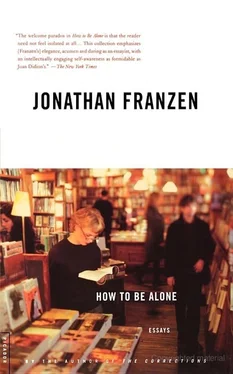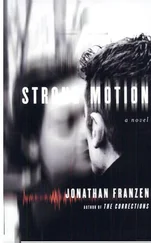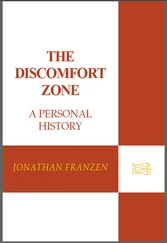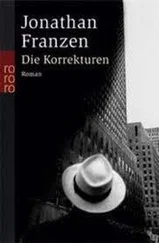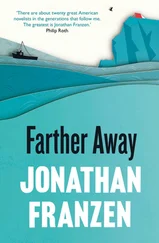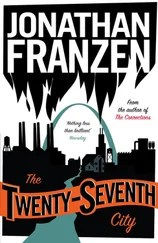As Heath unpacked her findings for me, I was remembering the joy with which I’d discovered two friends in junior high with whom I could talk about J.R.R. Tolkien. I was also considering that for me, today, there is nothing sexier than a reader. But then it occurred to me that I didn’t even meet Heath’s first precondition. I told her I didn’t remember either of my parents ever reading a book when I was a child, except aloud to me.
Without missing a beat Heath replied: “Yes, but there’s a second kind of reader. There’s the social isolate — the child who from an early age felt very different from everyone around him. This is very, very difficult to uncover in an interview. People don’t like to admit that they were social isolates as children. What happens is you take that sense of being different into an imaginary world. But that world, then, is a world you can’t share with the people around you — because it’s imaginary. And so the important dialogue in your life is with the authors of the books you read. Though they aren’t present, they become your community.”
Pride compels me, here, to draw a distinction between young fiction readers and young nerds. The classic nerd, who finds a home in facts or technology or numbers, is marked not by a displaced sociability but by an antisociability. Reading does resemble more nerdy pursuits in that it’s a habit that both feeds on a sense of isolation and aggravates it. Simply being a “social isolate” as a child does not, however, doom you to bad breath and poor party skills as an adult. In fact, it can make you hypersocial. It’s just that at some point you’ll begin to feel a gnawing, almost remorseful need to be alone and do some reading — to reconnect to that community.
According to Heath, readers of the social-isolate variety are much more likely to become writers than those of the modeled-habit variety. If writing was the medium of communication within the community of childhood, it makes sense that when writers grow up they continue to find writing vital to their sense of connectedness. What’s perceived as the antisocial nature of “substantive” authors, whether it’s James Joyce’s exile or J. D. Salinger’s reclusion, derives in large part from the social isolation that’s necessary for inhabiting an imagined world. Looking me in the eye, Heath said: “You are a socially isolated individual who desperately wants to communicate with a substantive imaginary world.”
I knew she was using the word “you” in its impersonal sense. Nevertheless, I felt as if she were looking straight into my soul. And the exhilaration I felt at her accidental description of me, in unpoetic polysyllables, was my confirmation of that description’s truth. Simply to be recognized for what I was, simply not to be misunderstood: these had revealed themselves, suddenly, as reasons to write.
By the spring of 1994 I was a socially isolated individual whose desperate wish was mainly to make some money. I took a job teaching undergraduate fiction-writing at a small liberal arts college, and although I spent way too much time on it, I loved the work. I was heartened by the skill and ambition of my students, who had not even been born when Rowan and Martin’s Laugh-In first aired. I was depressed, however, to learn that several of my best writers, repelled by the violence done to their personal experience of reading, had vowed never to take a literature class again. One evening a student reported that his contemporary fiction class had been encouraged to spend an entire hour debating whether the novelist Leslie Marmon Silko was a homophobe. Another evening when I came to class three women students were hooting with laughter at the patently awful utopian-feminist novel they were being forced to read for an honors seminar in Women and Fiction.
It goes without saying that a book as dark as Desperate Characters would never be taught in such a seminar, however demonstrably female its author may be. Sophie and Otto Bentwood treat each other both badly and tenderly; there’s no way to fit such three-dimensionality into the procrustean beds of victim and victimizer. But the therapeutic optimism now raging in English literature departments insists that novels be sorted into two boxes: Symptoms of Disease (canonical work from the Dark Ages before 1950), and Medicine for a Happier and Healthier World (the work of women and of people from non-white or non-hetero cultures). That you can now easily get a BA. in English literature without reading Shakespeare — that students are encouraged to read the literature that is most “meaningful” to them personally, and even if they do read Shakespeare to read him as they “choose” (say, for his (mis)representations of the Other) — reflects a notion of culture that resembles nothing so much as a menu to be pointed at and clicked.
It does seem strange that with all the Marxists on college campuses, more is not made of the resemblance that multiculturalism and the new politics of identity bear to corporate specialty marketing — to the national sales apparatus that can target your tastes by your zip code and supply you with products appropriate to your demographics. Strange, too, that postmodernism, which is multiculturalism’s counterpart among the tenured creative-writing avant-garde, should celebrate as “subversive” the same blending of Hi and Lo culture that The New York Times Magazine performs every Sunday between ads for Tiffany’s and Lancôme. [5] Last fall the word “literature” appeared twice on the magazine’s cover: “The Roseanne of Literature” (profile of Dorothy Allison) and “Want Literature? Stay tuned!” (“The Triumph of the Prime-Time Novel”).
Stranger yet that all these academic Che Guevaras have targeted as “monolithic” and “repressive” certain traditional modes of serious fiction that in fact are fighting television and therapy for their very life. Strangest of all, perhaps, that such heroic subversives, lecturing on the patriarchal evil du jour while their TIAA-CREF accounts grow fat on Wall Street, manage to keep a straight face.
Then again, there has always been a gulf between ideologues, whose ideas abound with implicit optimism, and novelists, whose pessimism reflects their helplessness to ignore the human beings behind ideas. The contemporary fiction writers whose work is being put to such optimistic use in the academy are seldom, themselves, to blame. To the extent that the American novel still has cultural authority — an appeal beyond the academy, a presence in household conversations — it’s largely the work of women. Knowledgeable booksellers estimate that 70 percent of all fiction is bought by women, and so perhaps it’s no surprise that in recent years so many crossover novels, the good books that find an audience, have been written by women: fictional mothers turning a sober eye on their children in the work of Jane Smiley and Rosellen Brown; fictional daughters listening to their Chinese mothers (Amy Tan) or Sioux grandmothers (Louise Erdrich); a fictional freed-woman conversing with the spirit of the daughter she killed to save her from slavery (Toni Morrison). The darkness of these novels is not a political darkness, banishable by the enlightenment of contemporary critical theory; it’s the darkness of sorrows that have no easy cure.
The current flourishing of novels by women and cultural minorities may in part represent a movement, in the face of a hyperkinetic televised reality, to anchor fiction in the only ground that doesn’t shift every six months: the author’s membership in a tribe. If nothing else, the new cultural diversity of fiction shows the chauvinism of judging the vitality of American letters by the fortunes of the traditional social novel. It’s often argued, in fact, that the country’s literary culture is healthier for having disconnected from mainstream culture; that a universal “American” culture was little more than an instrument for the perpetuation of a white, male, heterosexual elite, and that its decline is the just desert of an exhausted tradition. (Joseph Heller’s depiction of women in Catch-22 is so embarrassing, certainly, that I hesitated to recommend the book to my students.) There’s little doubt that many of the new novels are at some level dramas of assimilation, which are broadening our conception of the national culture just as Roth’s novels of Jewish-American life did a generation ago.
Читать дальше
Конец ознакомительного отрывка
Купить книгу
